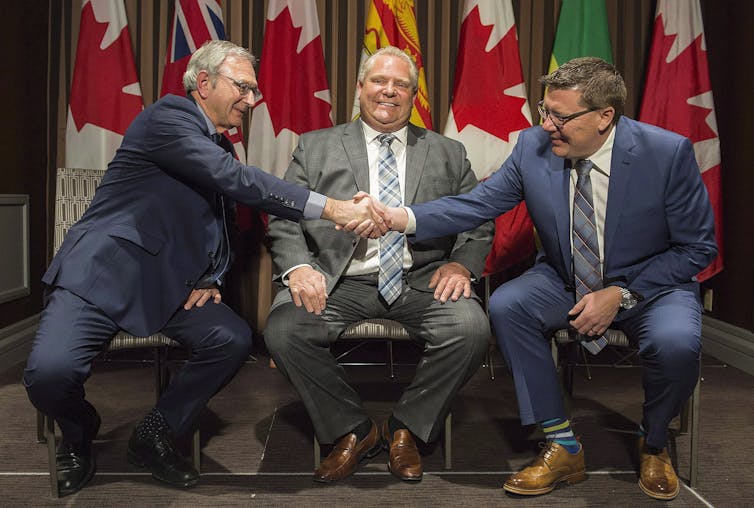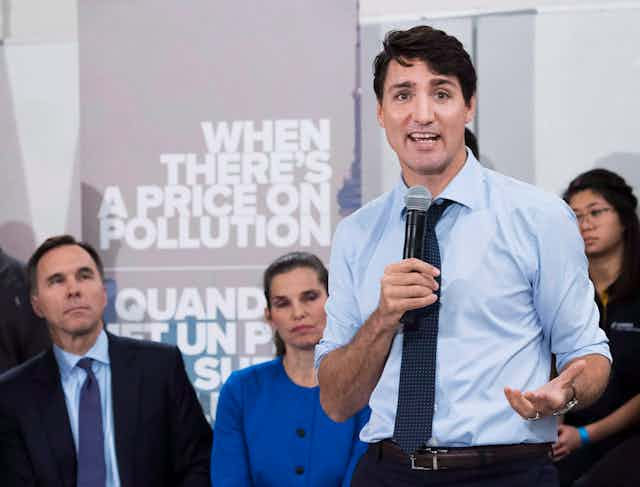The latter half of 2018 saw the release of a flurry of climate change reports, from the special report on global warming of 1.5°C to the Emissions Gap Report (EGR). The conclusions are the same: current global commitments under the Paris Agreement fall far short of the 1.5°C target, and a 2°C (or more) increase in temperature will trigger adverse consequences for humans and nature.
The EGR also reaffirmed Canada’s front seat in the laggards’ zone. It confirmed that Canada is neither on track to meet its Cancun pledge for 2020 to achieve a 17 per cent decrease in emissions, nor its unconditional commitment under the Paris Agreement to reduce its emissions by 30 per cent relative to 2005 levels by 2030.
Canada has generally taken a top-down approach in the design of its climate policy. This approach is not only detached from the political reality of the Canadian federal system, it also fails to capture the communicative demand of climate policy making.
But it is possible to reboot Canada’s climate policy by taking into account local peculiarities and making it more resilient to government turnover.
The state of play
One might contend that Canada’s current backwardness is not for want of trying.
In December 2016, shortly after Canada made its Paris commitments, Prime Minister Justin Trudeau corralled premiers to create the Pan-Canadian Framework on Clean Growth and Climate Change (PCF). The framework, which centres on carbon pricing, is designed to help Canada meet its commitment under the Paris Agreement. With the exception of Saskatchewan and Manitoba, the provinces and territories endorsed the PCF.
But within two years of signing the historic agreement, the newly elected governments in Ontario and New Brunswick also rejected the PCF, and the United Conservative Party in Alberta has indicated that it will renege, if elected in the province’s 2019 general election.

The PCF is dogged by questions of effectiveness, equity and flexibility. Saskatchewan and Ontario, for instance, argue that carbon tax would not significantly reduce emissions, will kill jobs and make it difficult to play to the comparative advantages of the provinces.
Two central sub-themes of these questions are burden sharing, through which climate burdens can be allocated by identifying the peculiarities of provinces, and political acceptability, which speaks to the electoral phobia of political office holders.
Burden sharing
At the First Ministers’ meeting in Vancouver in 2016, the idea of assigning specific climate obligations for each province and territory was considered to be too sensitive a subject. Rather, a working group did a nationwide sectoral scan of specific mitigation opportunities.
The caution was not without justification. The issue, in part, had sounded the death knell of the previous National Climate Change Process (NCCP) negotiation, when the provinces and territories had failed to agree on a formula to allocate climate burden. But falling once is no reason not to walk again.
It is often assumed that Canada’s 30 per cent emission reduction target simply translates into a 30 per cent emission reduction obligation for each province. This presumption and the commitments it induces, however, leads to an aggregate that is less than Canada’s national goal under the Paris Agreement. Yet the flaw can be addressed by a burden sharing approach.
Read more: More than carbon taxes, we need wholescale energy transitions
The 2016 Vancouver meeting was a missed opportunity to design a burden-sharing formula for Canada. Burden sharing is not just a tool for allocation, nor does it impose implementation pathways. Rather, it is an instrument of reassurance of the possible and the equitable distribution of costs.
This lesson is powerfully taught by the European Triptych burden-sharing approach developed in 1997. The approach identified emissions-intensive sectors in each European Union member state, calculated the emission allowances for each sector considering particular circumstances and derived state-by-state targets by adding up the sectoral allowances.

This gave a clear picture to each state of how their obligations were reached, and their capacity to achieve such targets. It also made provisions for states that will incur the highest cost or those without the capacity to implement prescribed responsibilities.
Cohesion fund countries like Portugal, Greece and Croatia, for example, with GDPs less than 75 per cent of the EU GDP average, were allowed to grow their electricity consumption by 1.9 per cent, compared to 0.9 per cent growth allowance for more developed EU states. Triptych even led to emissions-reduction targets that were higher than what the states had been prepared to accept.
To be clear, designing a Canadian burden-sharing formula will not be easy. It will be fought by some provinces, while others will embrace it. But, as the PCF has shown, any Canada-wide climate policy will be contentious. Taking the burden-sharing route is a worthwhile fight that will not only put Canada on a path to meeting immediate climate commitments, but can also help provinces forge an enduring cooperation based on the principles of equity and flexibility.
Direct engagement
The provinces protesting the PCF refer to its adverse effects on their constituents. If the people are central to the opposition of provinces, one wonders if this is not a natural place to begin the design of a pan-Canadian climate policy. To what extent were residents of emissions-intensive provinces like Alberta and Saskatchewan directly engaged prior to creating the PCF?
We can learn from German thinker Jürgen Habermas on the importance of communicative action for the legitimacy of policies. Regardless the “inherent good” of a policy, its effectiveness boils down to acceptance, and acceptance is a function of communication.
But the PCF — both in the lead up and the aftermath — falls short of this requirement, and the research proves it. For instance, a 2018 study found that less than half of Canadians understand what carbon pricing is, despite this being at the core of the PCF. And most people in Québec and British Columbia don’t know that those two provinces have had a carbon tax for at least a decade.
Read more: Want citizens to care about climate change? Write them a cheque
As important as market mechanisms might be, behavioural change is central to fighting climate change, and this lies with individuals. It is, therefore, imperative that the climate change conversation in Canada leaves the realm of governmental institutions and centralized policies. The conversation must be strategically deregulated.
It is about time we agreed that there are real, even if at times misguided, concerns in carbon-intensive provinces. People fear that they will spend more, lose jobs and their provinces will become unviable. It is not enough to reach these people through their political representatives. Governments must develop a mechanism that allows them to directly engage with individuals. Nothing is more important.

